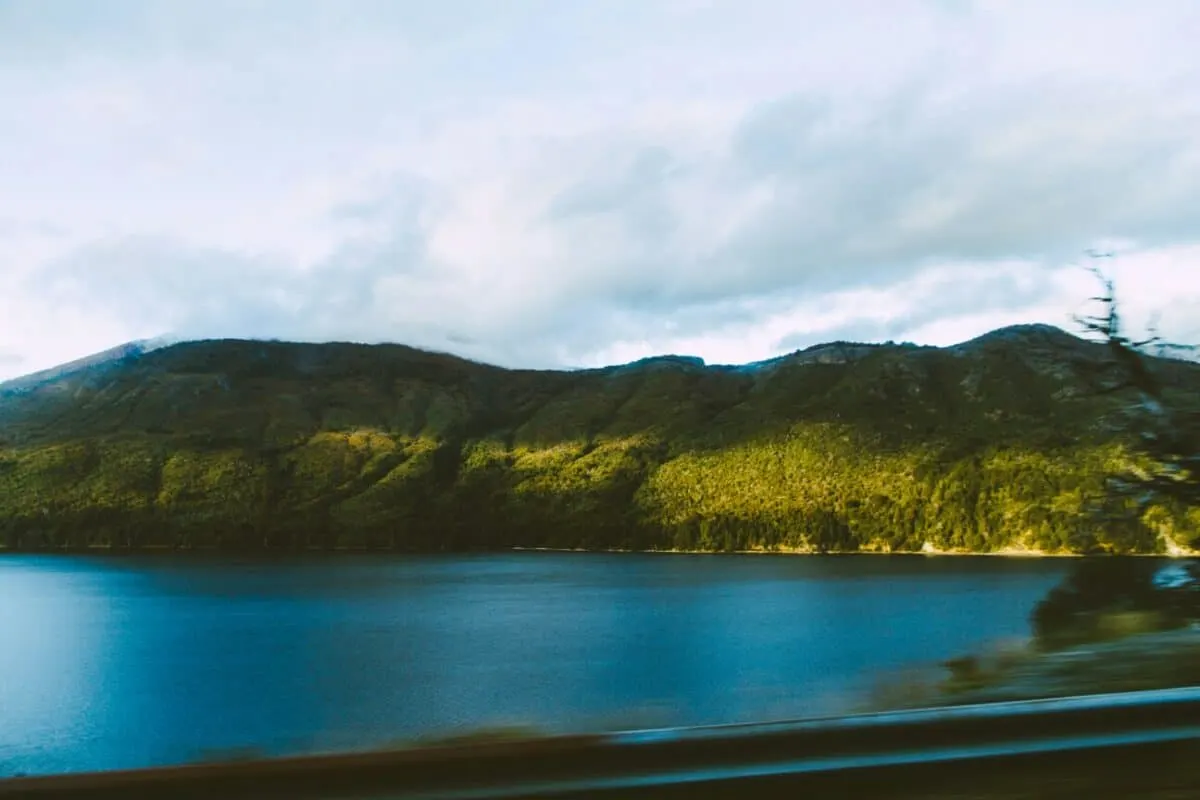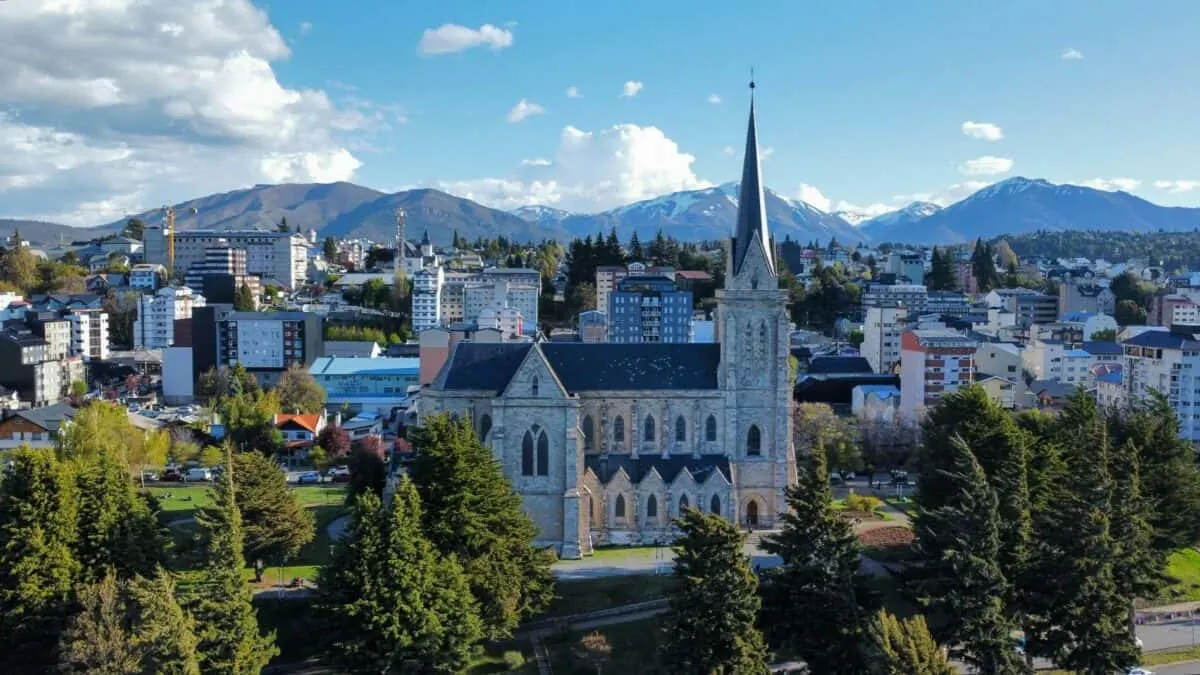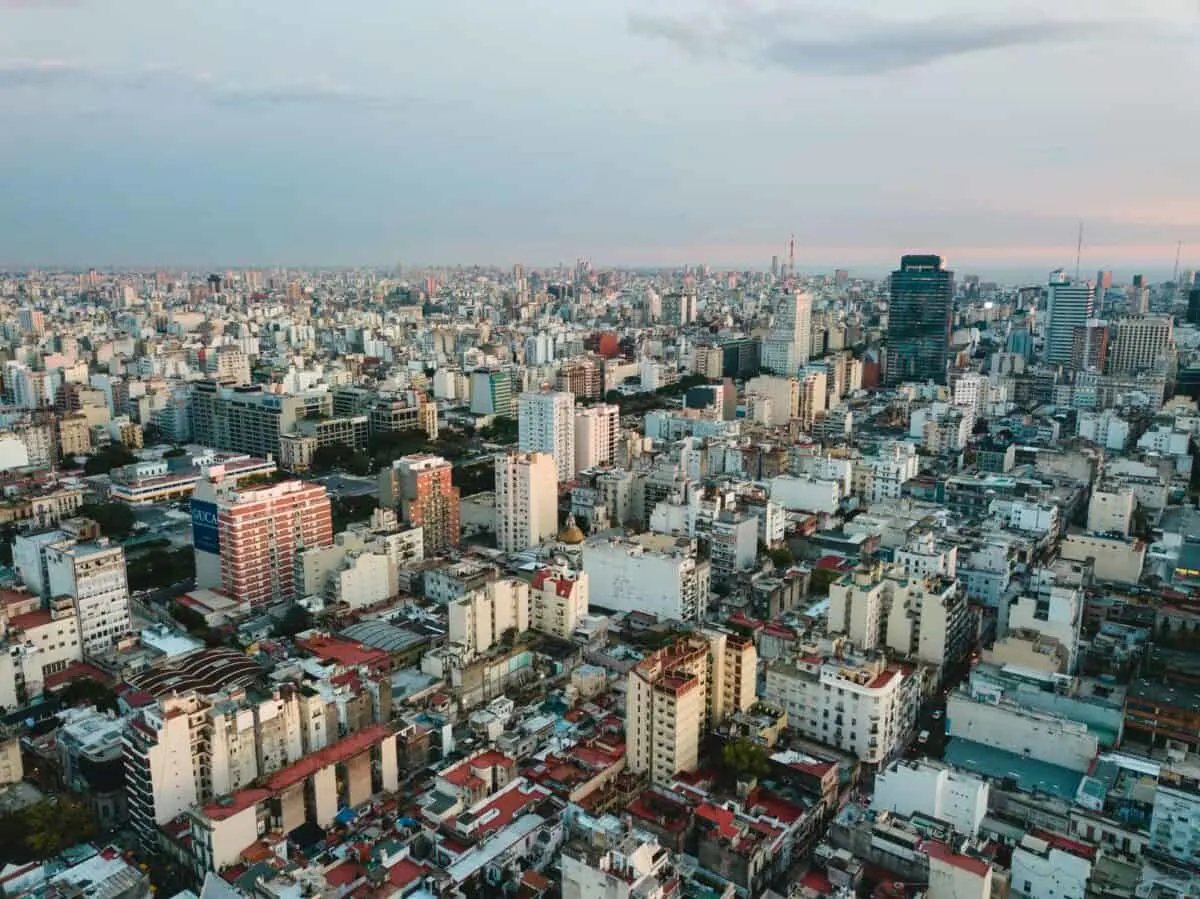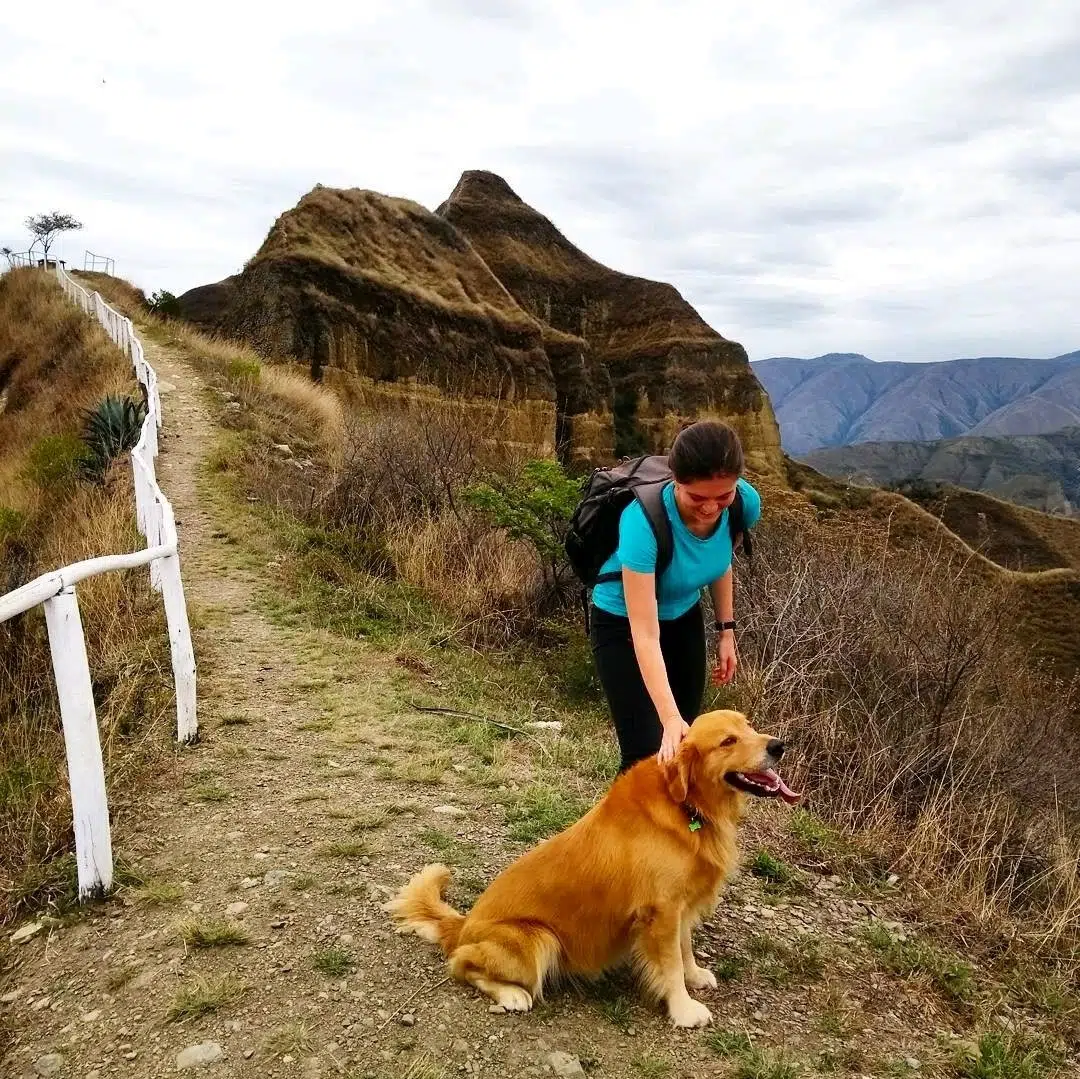
Do you know that the fictional Paradise Falls from the popular Disney movie Up is inspired by a real landmark in South America called Angel Falls? It is dubbed the tallest uninterrupted waterfall in the world and one of South America’s most awe-inspiring waterfalls.
National Geographic calls South America the “continent of extremes,” encompassing not only the Atacama Desert and the Amazon but also Patagonia, Argentina.
Patagonia is a collection of theatrical landscapes, from lush forests and rivers to snow-capped mountains and glaciers. It is a paradise for nature lovers and adrenaline-fueled adventurers, nestled and maintained by two countries: Argentina and Chile.
In the Argentinian part of Patagonia, you’ll find a stunning variety of landscapes perfect for adventurous travelers. We’ve compiled a list of must-see destinations in Patagonia, Argentina, to help you start your journey. These breathtaking landscapes are a very recommended addition to your bucket list and one of the most beautiful places I’ve ever visited.
1. Bariloche

Bariloche, especially San Carlos, is known as the “Switzerland of Argentina” because of its location in the northern part of Patagonia. It is one of the best places to visit in South America and one of my favorite cities. We stayed there more than a week in 2022, and I’d love to go back in the near future.
The town features charming Swiss architecture, including sloping roofs and cobbled streets, which add to its unique charm.
Bariloche has a population of over 160,000, making it one of Patagonia’s big cities and a hub in the entire area, so it’s a good place to start.
Visiting the town during winter is the perfect time for skiers to enjoy Cerra Catedral and its thrilling slopes. For hikers, traverse the Refugio Frey trek to witness the stunning sight of Laguna Toncek and Cerro Catedral Mountain.
2. Nahuel Huapi National Park
Nahuel Huapi National Park is in the Argentine Lakes District, near the curve leading to the Andes Mountains. Established in 1934, the Argentine National Park features diverse natural landscapes, including clear lakes, dense forests, and stunning waterfalls. One of its notable attractions is the Arrayanes Forest, home to trees aged between 300 and 600 years old.
The park measures 2,720 square miles and encompasses the Nahuel Huapi Lake and the Andes Mountains in Argentina. However, due to the massive area of the park, you’re advised to bring a car when you visit or take a guided tour.
3. Llao Llao Peninsula
Located near Bariloche, the Llao Llao Peninsula is one of Patagonia’s go-to destinations because of its proximity to the big city. You can easily reach the peninsula in around 30 minutes.
Ride the cable car and visit Cerro Campanario for the best view of the entire Andean Lake District. In addition to the stunning sights, you can enjoy many activities while on the peninsula, including biking along Circuito Chico and socializing with locals and tourists alike in Cerveceria Patagonia.
4. El Chaltén
Located in the Santa Cruz Province, El Chaltén is named Argentina’s trekking capital because of the abundance of stunning hiking routes anyone can enjoy.
The small town has a population of 1,627 people and welcomes tourists with a laid-back atmosphere by providing them with everything they need, from food, lodgings, and outdoor gear.
Despite the town’s small population, there are plenty of trails and routes. Check out the 10.6-mile Loma del Pliegue Tumbado, a less popular but stunning and underrated trail.
5. Mount Fitz Roy
Located in El Chaltén, Mount Fitz Roy, or Cerro Fitz Roy, is one of the must-dos while you’re in Argentina. The mountain stands tall at 11,171 feet (3,405 meters), with its peak seen from all the towns below. If you want the best look at the majestic landform, go through the 15-mile Laguna De Los Tres trail. You’ll pass through streams and forests before arriving at a breathtaking view of the mountain overlooking the stunning lake.
Venture on this trail during the day; it will be easy with all the clear marks along the way. However, be cautious — the final stretch of the trek is steep and takes a little longer than you’d think.
6. Cerro Torre
Besides Mount Fitz Roy, Cerro Torre is another adventure in Argentinian Patagonia. The mountain is one of the most difficult peaks to climb, making it a challenge even for professional hikers. Besides its pointed shape and high peak, the weather also makes this climb difficult.
If you’re looking for an adventure, this is definitely one journey you can take on. With clear markers, it can take you 9 hours to climb up and down. However, actually climbing the mountain is only recommended if you have experience and go with an even more experienced guide, as conditions can change quickly in the area.
Drop by Viedma Glacier to visit more than just the mountain.
7. Los Glaciares National Park
Created in 1937, Los Glaciares National Park (Parque Nacional Los Glaciares) became one of the most visited destinations in Argentina, making Patagonia a must-go spot in the country. In 1981, it became a UNESCO World Heritage Site.
The park provides access to several iconic destinations, including Perito Moreno. It’s known as one of the most accessible glaciers in the world and for its dramatic ice formations. Hikers will find this park interesting, with many trails that can accommodate beginners and professionals alike.
8. El Calafate
El Calafate made a name for itself because of the stunning Perito Moreno and its proximity to Lago Argentino. It is one hour from Los Glaciares National Park, so it’s not a bad stop if you want to go to other sites besides the popular park.
Besides Perito Moreno, El Calafate’s charm is rooted in experiencing the lifestyle of the town’s residents. Eating a traditional roasted lamb and sharing stories with the Patagonian cowboys makes it worth the visit.
9. Ushuaia

Ushuaia is a historic city that was first used as a place to house prisoners who were transferred from Buenos Aires. It was called the “end of the world” because of its location on the southernmost tip of the country. The nickname piques tourists’ curiosity, especially considering its historical use as a prison town and its present atmosphere.
Today’s Tierra del Fuego capital city is a booming hub that hosts many cruises to Antarctica. The Tierra Del Fuego National Park also offers hikers to Glaciar Martial that adventure-seekers would want to try out.
10. Punta Tombo
For wildlife lovers, Punta Tombo on the Atlantic coast of Argentina and 62 miles (100 kilometers) from Trelew is a good place to visit. The sanctuary houses the largest Magellanic penguin colony in the world, which is not in Antarctica. It also shelters sea lions, orcas, and cormorants in the waters.
If you want to see the penguins, visit the sanctuary between September and April. It’s the season for the penguins to nest and breed, which makes Punta Tombo busy and booming with them. You can freely watch them by walking along the designated walkways all over the sanctuary.
11. The Valdés Peninsula
The Valdés Peninsula is a UNESCO World Heritage Site due to its stunning aesthetics and the wildlife that freely lives in the area. You can see Magellanic penguins and elephant seals along the shores and rhea and guanaco in the land.
The peninsula’s most popular animal is the southern right whale. If you visit at the right time, during the breeding season between June and November, you can see several of them off the coast.
12. El Bolsón
El Bolsón is an underrated small town found in the province of Rio Negro. Its untamed natural beauty offers a breathtaking sight of abundant fruit trees across the valley and the refreshing Lago Puelo painting the landscape.
Socialize with the locals and get into the hippie vibe they show through many creative venues and markets, including arts and handicrafts. You can also join some fun water activities in Lago Puelo, like paddle boarding and kayaking. Horseback riding is also a fun and popular activity in this charming town.
13. The Welsh Villages
Argentinian Patagonia’s The Welsh Villages can be found in the Chubut Province. Gaiman and Trelew are towns built in 1865 by Welsh settlers working hard to look for a new home. Throughout the years, they’ve become centers of Welsh-Argentine culture in Patagonia.
Depending on where you’re coming from, you can reach them in two hours via Puerto Madryn. One of the best things about these towns is that residents can speak Welsh, Spanish, and English, so you can rest assured that you can easily get help from locals when you need it.
14. The Cave of Hands
The Cave of Hands, or La Cueva de las Manos, is a UNESCO World Heritage Site under the Cultural Patrimony of Humanity. It houses historical paintings made by people who lived there more than 10,000 years ago. Considering its historical significance, it’s equally fascinating and stunning to see with your own eyes.
La Cueva de las Manos is filled with handprints from millennia ago, made by ancient tribes using natural minerals. The tribal masterpiece also includes depictions of the sun, Shamans, and several hunting scenes focusing on a llama-like animal.
15. Los Antiguos
Another destination in Patagonia, Argentina, you should not forget is the Los Antiguos. It is a town located northwest of Santa Cruz, with a population of just 3,363 people. You can easily find this town by the shores of the largest lake in Patagonia, Lake of Buenos Aires.
Visit Los Antiguos in January to enjoy the Cherry Festival in town, regarded as the national capital of cherries. You can tour all the cherry farms in town, and since it’s also near the Cave of the Hands, you can drop by another stunning destination.
Many take the opportunity to cross the border to Chile when they’re in Los Antiguos, so it’s definitely an option to continue your journey into the Chilean part of Patagonia. The region is breathtaking from both sides, so it’d be my recommendation.
This article originally appeared on Travel Binger.

Meet Marjolein, the founder of Radical FIRE, a personal finance blog that helps you reduce money stress by making more money and investing. She has a finance and economics background with a master’s in Finance. She has quit her job and is currently traveling the world, documenting her travels on Spark Nomad to inspire people to explore the world.


